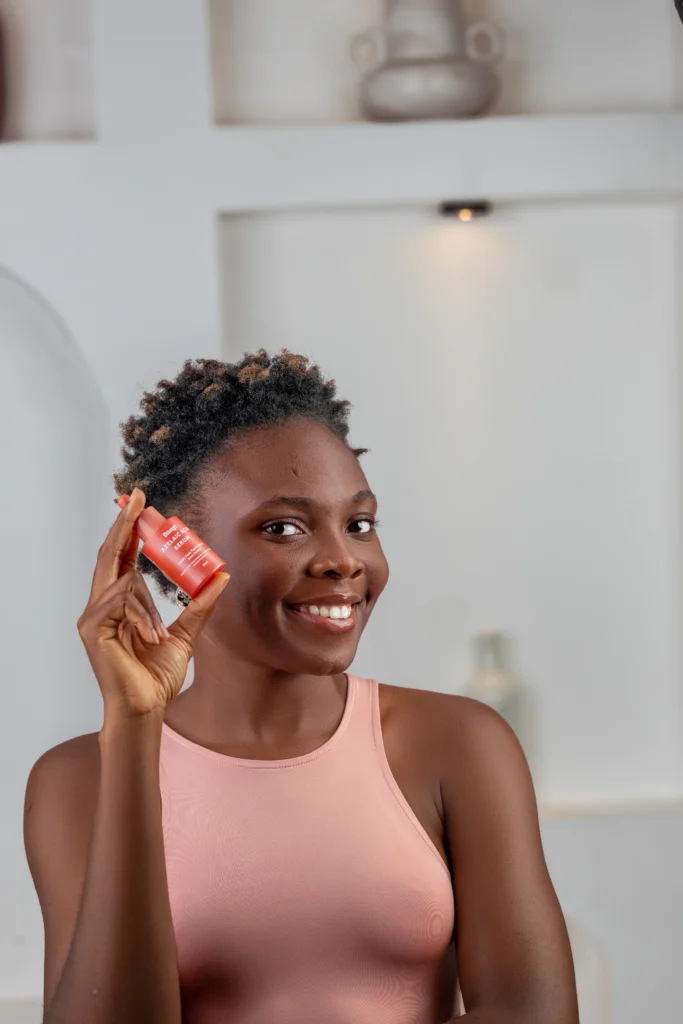
Free Shipping on Orders Over N200,0000 within Lagos
Buy 300k and get 20% off any spa service
Free Shipping For Orders over $150
Free Shipping For Orders over £100

Should you use azelaic acid or vitamin C for your hyperpigmentation? Or maybe both? Let’s break it down so you can make the best choice for your skin. If you have melanin-rich skin, you’ve probably noticed that dark spots stick around longer than you’d like.
Hyperpigmentation is one of the top skin concerns for people of color, especially African Americans, and finding the best hyperpigmentation treatment can feel confusing.
On the flip side, if you have the best skincare brand tailored for melanin-rich skin on your corner, then you don’t need to fret. We’ve been providing skin care solutions for melanin-rich skin, dealing with skin concerns like hyperpigmentation, acne, and anti-aging, among others.
Azelaic acid is more effective for treating hyperpigmentation and uneven tone. Vitamin C provides antioxidant protection to prevent new dark spots from forming while promoting overall skin brightness. Both ingredients have unique strengths, and using them together can offer a balanced approach to managing hyperpigmentation, especially for melanin-rich skin.
Hyperpigmentation happens when your skin makes extra melanin in response to things like acne, inflammation, or sun exposure. According to Harvard Health, one of the major causes of hyperpigmentation is sun exposure.
For people with darker skin tones, this process is stronger, and the dark spots tend to last longer. During skin analysis sessions, clients with brown or black skin often complain about their dark spots being around for months.
Azelaic acid and vitamin C are some of the most effective hyperpigmentation ingredients, especially for brown skin. They both target the melanocytes (melanin pigment) to brighten and even your skin tone.
The real difference between the ingredients is in how they deliver the desired result.
Vitamin C, also called ascorbic acid, is a powerful antioxidant. It helps with:
According to this article published by Harvard Health, topical vitamin C offers several science-backed benefits for the skin. However, it can sometimes irritate sensitive skin, especially in high concentrations.
For skin of color, this means you’ll want to choose a stable, well-formulated serum to minimize irritation.
Azelaic acid is a gentle dicarboxylic acid that’s safe for all skin types, including sensitive and melanin-rich skin. It works by:
Azelaic acid is one of the best ingredients for hyperpigmentation and dark spots in skin of color. A clinical study also found azelaic acid 20% to be a highly effective treatment for facial hyperpigmentation in darker-skinned people.
Both azelaic acid and vitamin C are 2 powerhouse ingredients for treating hyperpigmentation. However, they offer different benefits.
| Benefit | Vitamin C | Azelaic Acid |
| Brightening overall skin tone | Strong | Moderate |
| Fading stubborn hyperpigmentation | Takes time | Highly effective |
| Antioxidant protection | Yes | Yes |
| Anti-inflammatory | No | Yes |
| Irritation risk | High | Very Low |
For melanin-rich skin, azelaic acid works best for pigmentation. It often delivers faster, more reliable results on pigmentation, while vitamin C gives you long-term glow and protection. Together, they’re a powerhouse.
Yes! In fact, using them together is often the best approach.
Sunscreen is non-negotiable, especially for preventing pigmentation from worsening. When clients ask me if they can do without using sunscreen, I usually say no. It’s a no-brainer in any skincare routine.
Morning:
Night:
With this routine, you can minimise the risk of irritation and enjoy the benefits of using vitamin C and azelaic acid for hyperpigmentation.
Pro Tip: Always patch test new products on the inside of your wrist before full application.
So, azelaic acid or vitamin C for hyperpigmentation? The answer is: both have a role. If you want to fade stubborn dark spots, azelaic acid is your go-to. If you want to keep your skin radiant and protected, vitamin C is essential.
Used together, they can help you achieve clear and healthy skin. Vitamin C isn’t the only active ingredient that can be paired with azelaic acid.
See the benefits you can get from using azelaic acid and tretinoin together.
Azelaic acid is generally considered more effective than vitamin C when it comes to treating hyperpigmentation. While vitamin C prevents new dark spots and brightens overall skin tone, azelaic acid works directly on existing pigmentation by slowing down the production of excess melanin. If your main concern is stubborn dark spots or melasma, azelaic acid is usually the stronger option.
Azelaic acid is one of the best ingredients for managing hyperpigmentation because it targets discoloration at the source. It not only fades dark spots but also reduces redness and is gentle enough for sensitive and acne-prone skin. However, it may not be the only best option, it’s often recommended to combine it with other proven ingredients like retinoids, niacinamide, or vitamin C for more powerful results.
Yes, you can! Vitamin C and azelaic acid actually complement each other well. Vitamin C helps protect your skin from free radical damage and prevents new spots, while azelaic acid works on fading the spots you already have. Using them together in your skincare routine can deliver both prevention and treatment. Just make sure to introduce them slowly and use sunscreen daily, since both ingredients make your skin more sensitive to sunlight.
Better depends on your skin type and the severity of your pigmentation. For some people, prescription-strength treatments like hydroquinone, retinoids, or professional options such as chemical peels and laser therapy may work faster than azelaic acid. That said, azelaic acid is one of the best acids for dark spots and hyperpigmentation because it’s effective, gentle, and safe for long-term use, even for sensitive and darker skin tones that can sometimes react badly to harsher treatments.




